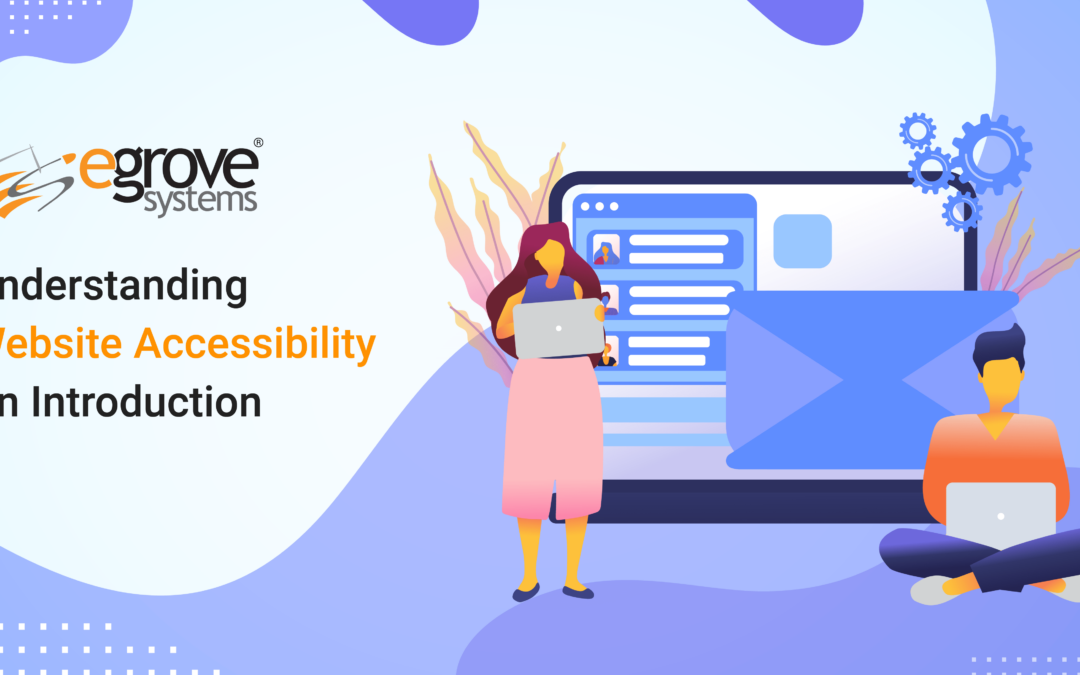Accessible websites are usable by all visitors, including those with impairments, disabilities, and limitations. The World Wide Web is intrinsically designed for all people, irrespective of their hardware, software, language, location, or ability. When the web fulfills this objective, we can say that it is accessible to all people with a diverse range of movement, hearing, sight, and cognitive abilities.
However, when we separate idealism from practicality, it becomes very clear that the current standards regarding website accessibility offer vehement scope for improvement. For instance, 90 percent of websites fail to meet the accessibility needs of individuals depending on assistive technology and companies without accessible websites are losing a whopping USD 6.9 billion per year as compared to their accessible counterparts.
So, long story short, website accessibility is the need of the hour, especially in 2024, when we all understand the socio-economic significance of inclusivity, diversity, and inclusivity.
What is website accessibility?
Web accessibility means the practice of designing and developing websites, tools, and technologies so that people with disabilities can use them. More significantly, people can –
- Perceive, understand, navigate, and interact with the Web
- Contribute to the Web
Thus, website accessibility includes following design and development principles that ensure people who experience difficulties and limitations can experience the Web in the same way as those who do not. Accessibility is crucial for developers and organizations that desire to create high-quality websites and web tools and do not want to exclude people from using their products and services.
Importance of Website Accessibility
- Website Accessibility has Financial Implications
Website accessibility is a technical, legal, and societal responsibility that has vast business prospects as well. According to the World Health Organization (WHO), 15 percent of the global population, which is roughly 1 billion people, experience some form of disability.
This massive cohort interacts with digital platforms in different ways and their capabilities to do so are impacted by how well a website is accessibility-oriented. According to the World Bank, businesses collectively lose out on USD 25 billion in revenue because of inaccessible websites for individuals with disabilities.
Likewise, the global market of people with disabilities represents an annual disposable income of USD 1 trillion, which further elucidates the magnanimous financial benefits of web accessibility.
- Accessible Websites Are SEO-Friendly
A well-designed and accessible website opens your business to a wider market and also bolsters the user experience. Thus, the culminating SEO benefits are also stark. For example, an accessible website is more user-friendly, easily navigable, and more effective in retaining and converting visitors.
Moreover, the simple accessibility practices of providing alt text for images, proper header structure, etc. also align with the best SEO practices. The result is that your website can reach the top rungs of Google’s SERP (Search Engine Results Page) and thereby gain higher traffic, conversions, and sales.
- Accessible Websites Save You Money
Web pages designed to cater to accessibility are easier to maintain, update, and redesign. Thus, the cost of website maintenance was reduced significantly. Likewise, web accessibility results in streamlined code that makes your web pages faster to download. Hence, you save money by mitigating bandwidth costs. Web accessibility improves device compatibility and makes your websites work on different screens seamlessly.
Who Benefits from Website Accessibility?
Website accessibility benefits people with all disabilities, including –
- Auditory
- Cognitive
- Neurological
- Physical
- Speech
- Visual
Similarly, website accessibility also benefits older users, people with low literacy and those learning the English language, people with poor internet connections, and people just learning to use the computer. Other contexts where website accessibility becomes beneficial are:
- People using mobile phones, smart TVs, smart watches, etc. with small screens, different input modes, etc
- Aging-related altering abilities in older individuals
- People with situational limitations, such as in bright light or in an environment where they cannot listen to the audio,.
- Those with temporary limitations like broken arms or missing spectacles.
Now that we have touched upon the basics of website disability, let us delve into the topic in more detail.
Who defines Website Accessibility?
After gaining a crisp knowledge of website accessibility, the first question that pops up in anybody’s mind is who is in charge of the web accessibility initiative and who works to enforce it across the internet? Well, the members of the Web Accessibility Initiative (WIP) and the World Wide Web Consortium (W3C) are responsible for ensuring web accessibility. They are responsible for publishing the Web Content Accessibility Guidelines (WCAG).
However, it is noteworthy to mention that website accessibility is not enforceable by any law unless you are operating a government website. In that case, you must abide by Section 508 of the Rehabilitation Act guidelines. But just because website accessibility is not legally binding does not mean that your business can automatically dodge lawsuits. In fact, between 2017 and 2018, the number of lawsuits filed has increased.
In Domino’s Pizza V/S Guillermo Robles, a man with vision impairment who could not order meals on Domino’s app and website even with the screen-reading software won.
What are the Web Content Accessibility Guidelines (WCAG)?
The management of website accessibility is based on the Web Content Accessibility Guidelines (WCAG). They are a set of guidelines underpinning most countries’ digital accessibility legislation. The latest version of WCAG, WCAG 2.1, meets the requirements of disabled persons, such as vision impairment, hearing loss, motor impairment, and cognitive disability.
The guidelines are organized around four principles – perceivable, operable, understandable, and robust. You can cater to these criteria by following some simple steps, such as –
- Ensuring that meaningful images on a web page consist of texts that convey their meaning.
- You can leverage headings and structure on a page. Start by using Heading 1 (H1) as your page title and then use Heading 2 (H2) for subheads, and so forth.
- Try avoiding combinations with poor color contrast, such as gray text on a white background.
Wrapping It Up
So, there we have it, a crisp overview and introduction to website accessibility. Website accessibility is of immense importance to any website owner, as it can either make or break the overall UX or user experience.







